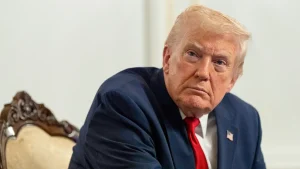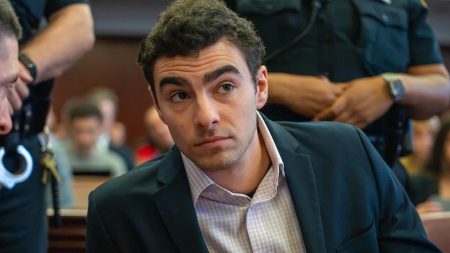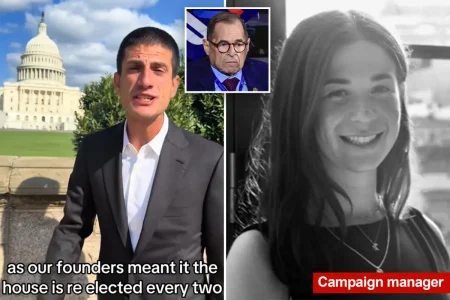U.S. Open 2024: Tennis’s Grand Spectacle Returns to New York
The Iconic Tournament Begins Its Annual Dance on the Hard Courts of Flushing Meadows
As summer reaches its final crescendo across America, the tennis world turns its collective gaze toward Queens, New York, where the 144th edition of the U.S. Open Tennis Championships has officially commenced. The tournament, steeped in tradition yet constantly evolving, represents not merely a sporting event but a cultural phenomenon that captivates millions worldwide. This year’s competition promises to deliver the customary blend of athletic brilliance, personal drama, and unexpected storylines that have defined the season’s final Grand Slam for generations.
The grounds of the USTA Billie Jean King National Tennis Center have once again transformed into the epicenter of the sporting universe, welcoming players, fans, celebrities, and media from across the globe. The distinctive blue hard courts, set against the backdrop of Arthur Ashe Stadium’s imposing architecture, provide the stage where careers will be defined, legacies cemented, and new stars potentially born over the fortnight ahead. Tournament organizers have reported record ticket sales for this year’s event, reflecting both the enduring appeal of tennis’s most boisterous major and the sport’s continued expansion into new demographics and markets.
Champions and Challengers: The Competitive Landscape
This year’s men’s draw features a fascinating mix of established champions and emerging talents, creating what analysts describe as one of the most unpredictable fields in recent memory. Defending champion Novak Djokovic returns to Flushing Meadows with renewed determination after capturing Olympic gold in Paris, yet questions surrounding his physical condition persist following a grueling summer schedule. Meanwhile, world number one Jannik Sinner enters the tournament as perhaps the most consistent performer of 2024, having already claimed his maiden Grand Slam title at the Australian Open in January. The Italian’s powerful baseline game appears perfectly suited to the medium-paced hard courts of New York.
On the women’s side, the narrative centers on both the established elite and a new generation eager to make their mark. Defending champion Coco Gauff carries the hopes of the American public as she attempts to replicate last year’s breakthrough triumph. The Florida native’s improved serve and more aggressive court positioning have elevated her game to new heights over the past twelve months. However, world number one Iga Świątek looms as a formidable obstacle, having dominated the women’s tour with her relentless intensity and technical precision. The Polish star’s ability to adapt her clay-court excellence to hard courts makes her a perennial threat at any major. Veterans including Aryna Sabalenka and Elena Rybakina have also demonstrated championship credentials, while young talents such as Mirra Andreeva and Qinwen Zheng represent the sport’s exciting future.
Beyond the Baseline: The Tournament’s Economic and Cultural Impact
The U.S. Open’s significance extends far beyond the boundaries of athletic competition. Economic analysts estimate that the tournament generates more than $750 million in economic activity for New York City annually, creating thousands of temporary jobs and filling hotels, restaurants, and entertainment venues throughout the metropolitan area. Local businesses in Queens have developed a symbiotic relationship with the event, with many establishments reporting that the two-week tournament accounts for as much as 20 percent of their annual revenue. “The U.S. Open isn’t just a tennis tournament for us—it’s our financial lifeline,” explained Maria Gonzalez, owner of a family restaurant near the tennis center. “These two weeks help carry us through the slower winter months.”
The tournament’s cultural footprint has expanded exponentially in the digital age. Social media engagement surrounding the U.S. Open has increased by approximately 35 percent year-over-year, according to tournament officials, with particularly strong growth on platforms popular among younger demographics. The event’s distinctive atmosphere—where tennis traditions blend with celebrity sightings, fashion statements, and gourmet dining experiences—creates a unique position in the American sporting landscape. “What sets the U.S. Open apart is its ability to transcend tennis and become part of the broader cultural conversation,” noted sports marketing expert Jonathan Phillips. “From the music played during changeovers to the elaborate food offerings and night session atmospherics, this tournament has reinvented what a tennis event can be.”
Innovation and Tradition: How the Tournament Continues to Evolve
Tournament organizers have consistently demonstrated a willingness to embrace innovation while respecting tennis traditions. This year marks the full implementation of electronic line calling on all competition courts, eliminating human line judges entirely in favor of automated technology. This change, accelerated by the pandemic but retained for its accuracy and efficiency, represents perhaps the most significant operational shift in the tournament’s recent history. “We’re committed to incorporating technology that enhances the integrity of competition,” explained Tournament Director Stacey Allaster. “But we’re equally focused on preserving the human elements that make tennis special.”
Climate considerations have also driven substantial changes to tournament operations. Following several years of extreme heat that resulted in difficult playing conditions, organizers have expanded the use of retractable roofs beyond Arthur Ashe and Louis Armstrong Stadiums. The Grandstand court now features a state-of-the-art covering system that can be deployed in under four minutes, protecting players and spectators from both rain and excessive heat. Sustainability initiatives have been implemented throughout the grounds, with the tournament claiming a 60 percent reduction in single-use plastics since 2018. Water refill stations, composting programs, and renewable energy sources reflect the event’s growing environmental consciousness.
The Future of American Tennis Takes Center Stage
For American tennis fans, the U.S. Open traditionally serves as both celebration and referendum on the state of the domestic game. This year’s tournament features encouraging signs of an American resurgence, particularly in the men’s game, which has experienced a prolonged drought at the Grand Slam level. Taylor Fritz, Frances Tiafoe, Tommy Paul, and Ben Shelton represent the strongest collective American male presence in a generation, with each demonstrating the potential to make a deep run. “There’s a healthy competition among us that pushes everyone to improve,” explained Tiafoe, whose charismatic personality has made him a fan favorite. “We genuinely want to see American tennis back on top, and we believe this group can make that happen.”
The women’s side presents an even more promising American outlook. Beyond Gauff’s established credentials, Jessica Pegula, Madison Keys, and Danielle Collins have all demonstrated the capability to challenge for major titles. The development pipeline appears equally robust, with promising teenagers Clervie Ngounoue and Iva Jovic receiving wild cards into this year’s main draw. United States Tennis Association officials point to increased investment in player development programs and improved coordination between regional training centers as factors behind the resurgence. “We’ve implemented a more holistic approach to player development,” explained Martin Blackman, USTA General Manager of Player Development. “Rather than focusing solely on technical skills, we’re addressing the mental, physical, and tactical elements required to succeed at the highest level.”
The Fortnight Ahead: What to Watch
As the tournament unfolds over the next two weeks, several compelling narratives warrant particular attention. The potential final chapters in Rafael Nadal’s storied U.S. Open career will undoubtedly attract emotional investment from fans, as the Spanish legend competes in what many speculate could be his final appearance in New York. The evening sessions at Arthur Ashe Stadium, famous for their electric atmosphere, feature strategically scheduled matchups designed to showcase both established stars and intriguing newcomers. The mixed doubles competition, often overlooked but featuring fascinating partnerships between singles specialists, presents some of the tournament’s most entertaining exchanges.
Weather forecasts suggest challenging conditions for the tournament’s first week, with high humidity and temperatures potentially reaching the mid-90s Fahrenheit. These circumstances typically favor players with superior physical conditioning and heat tolerance, potentially leading to unexpected results as the draw progresses. Strategic scheduling becomes increasingly crucial during extreme weather, with players desperately seeking night session assignments to avoid the most punishing conditions. As the tournament progresses toward its Labor Day weekend middle section, attendance traditionally peaks, creating the raucous environment that distinguishes the U.S. Open from its more reserved Grand Slam counterparts.
For the next fortnight, the tennis world will revolve around this distinctive slice of New York, where athletic excellence, commercial interests, cultural significance, and personal narratives converge to create sporting theater of the highest order. The U.S. Open has begun its annual journey—unpredictable, exhilarating, and utterly compelling.











